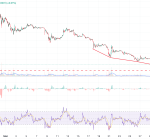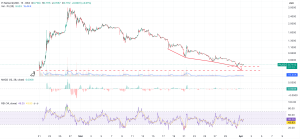
The cryptocurrency market has experienced a massive drawdown. A report from QCP Group, a prominent Singaporean digital asset trading firm, directly links the crash to aggressive selling by Jump Trading.
This sell-off has sent shockwaves through the crypto ecosystem, causing major digital assets like Bitcoin and Ethereum to suffer double-digit losses.
Jump Trading’s Massive Ethereum Movements
In support of the August 5 QCP report, blockchain analytical platform Spot On Chain also spotted Jump Trading moving 17,576 ETH, valued at $46.78 million, to various exchanges over the weekend.
The firm’s recent activities include converting 83,091 wstETH (worth $341 million) into 97,600 stETH and unstaking 86,059 stETH (valued at $274 million) from Lido Finance. These activities culminated in a net deposit of 72,213 ETH, equivalent to $231 million, into multiple exchanges.
Despite these massive transfers, Jump Trading still maintains substantial crypto holdings as Arkham Intelligence data shows the firm retains approximately 37,604 wstETH and 3,214 RETH, valued at around $110 million.
Additionally, another wallet associated with Jump Trading holds about $585 million in cryptocurrencies, primarily in stablecoins like USDC and USDT.
The impact of Jump Trading’s actions has been profound. Blockchain analyst Lookonchain reports that the market has slumped by over 33% since the firm began its selling spree on July 24.
Jump Trading is selling 120,695 $wstETH($481M) and has sold 83K $wstETH($377M) since July 24, leaving 37,604 $wstETH($104M).
The market also began to fall after July 24, falling by more than 33%!
According to reports on June 20, the US #CFTC is investigating Jump Trading.… pic.twitter.com/pOoGZknUDh
— Lookonchain (@lookonchain) August 5, 2024
This sell-off has drawn criticism from within the crypto community, with Adam Cochran, Managing Partner at Cinneamhain Ventures, stating that Jump Trading’s liquidation of their crypto holdings “into thin markets on a summer Sunday afternoon perfectly sums up why their crypto operation is such a mess.”
Macroeconomic Factors Increase Market Volatility, but DeFi Sector Weathers the Storm
While Jump Trading’s actions have greatly contributed to the market downturn, macroeconomic factors have also contributed to the volatility.
Weak US job market data released on Friday intensified fears of a potential recession. The data showed only 114,000 new jobs added in July—far below the expected 175,000.
This disappointing figure represents the weakest job growth since December of the previous year and nearly the lowest since the onset of the COVID-19 pandemic in March 2020.
Adding to market concerns, Warren Buffett’s Berkshire Hathaway sold approximately 50% of its Apple holdings, a move interpreted as hedging against potential market downturns.
🚨 BREAKING 🚨
WARREN BUFFETT’S BERKSHIRE
HATHAWAY SELLS 50% OF ITS
APPLE HOLDINGS.HE NEARLY SOLD $86 BILLION
WORTH OF $AAPL SHARES.BERKSHIRE HATHAWAY NOW
HOLDS $277 BILLION IN CASH. pic.twitter.com/jUXG45dhzy— Ash Crypto (@Ashcryptoreal) August 3, 2024
Furthermore, the Bank of Japan’s decision to raise its key interest rate for only the second time since 2007 sent ripples through global financial markets, with the Nikkei experiencing its largest two-day drop in history.
Despite these troubling moments, some decentralized finance (DeFi) protocols have demonstrated resilience and even profitability.
Notably, Aave, a prominent DeFi lending platform, reported substantial revenue generation during these bloodbaths.
Stani Kulechov, Aave’s founder, revealed that the protocol earned $6 million in revenue overnight due to the market stress.
Aave Protocol withstood market stress across 14 active markets on various L1s and L2s, securing $21B worth of value.
Aave Treasury was rewarded with $6M in revenue overnight from decentralized liquidations for keeping the markets safe.
This is why building DeFi is FTW.
— Stani (@StaniKulechov) August 5, 2024
This income was primarily derived from decentralized liquidations, underscoring the platform’s role in maintaining market stability across its 14 active markets on various Layer 1 and Layer 2 networks.
The market downturn triggered widespread liquidations, with over $1 billion liquidated in crypto derivatives markets and an additional $350 million in DeFi protocols, according to data from Parsec Finance.
Aave saw several significant liquidations, including a $7.4 million wrapped ether (WETH) position that yielded $802,000 in revenue for the protocol.















